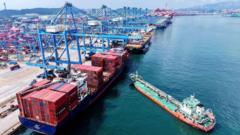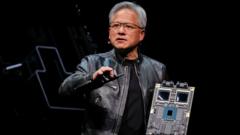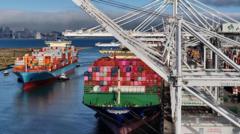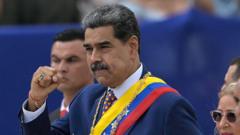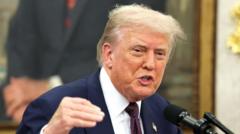As tensions with the U.S. escalate, Xi Jinping strategically prepares China to dominate global supply chains, flipping the narrative in the ongoing trade conflict.
Xi Jinping's Strategic Pivot: A Trade War Blueprint Unveiled

Xi Jinping's Strategic Pivot: A Trade War Blueprint Unveiled
Analyzing Xi Jinping's proactive response to global trade conflicts and China's economic strategy.
In April 2020, long before the U.S.-China trade war escalated under President Trump, Chinese leader Xi Jinping convened senior Communist Party officials to articulate a vision that would position his nation advantageously amidst increasing tensions. As the trade conflict evolved, tariffs and technology restrictions added fuel to the fire, most significantly post-Covid, which highlighted the global reliance on Chinese exports for critical supplies like medical equipment and pharmaceuticals.
Faced with an opportunity to counteract the trade imbalance concerns, China could have opened its markets further to foreign competition and honored previous commitments to purchase American goods. However, Xi decided on a path of increased aggression, aiming not only to fortify China's standing in global trade but also to establish a deterrent against U.S. tariffs and sanctions.
In a key speech to the Central Financial and Economic Affairs Commission, Xi emphasized the importance of tightening international production chains, stating that China must cultivate a strong capacity to counter attempts by foreign nations to disrupt supplies. This strategy is clear: if China controls essential goods, it creates leverage that discourages adversaries from engaging in trade hostilities.
The ramifications of Xi’s strategy are already felt globally, as dependence on Chinese manufacturing illustrates a fundamental shift in international trade dynamics. Instead of ceding ground, the Chinese leadership views this moment as an opportunity to bolster its influence and reshape the global economic landscape to its advantage.
As workers continue to operate at pivotal ports and factories across China, the nation stands at a crossroads, one where its actions could redefine the nature of trade and power relations for years to come.
Faced with an opportunity to counteract the trade imbalance concerns, China could have opened its markets further to foreign competition and honored previous commitments to purchase American goods. However, Xi decided on a path of increased aggression, aiming not only to fortify China's standing in global trade but also to establish a deterrent against U.S. tariffs and sanctions.
In a key speech to the Central Financial and Economic Affairs Commission, Xi emphasized the importance of tightening international production chains, stating that China must cultivate a strong capacity to counter attempts by foreign nations to disrupt supplies. This strategy is clear: if China controls essential goods, it creates leverage that discourages adversaries from engaging in trade hostilities.
The ramifications of Xi’s strategy are already felt globally, as dependence on Chinese manufacturing illustrates a fundamental shift in international trade dynamics. Instead of ceding ground, the Chinese leadership views this moment as an opportunity to bolster its influence and reshape the global economic landscape to its advantage.
As workers continue to operate at pivotal ports and factories across China, the nation stands at a crossroads, one where its actions could redefine the nature of trade and power relations for years to come.


